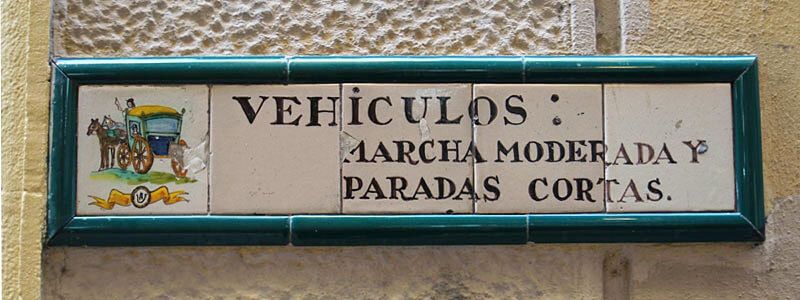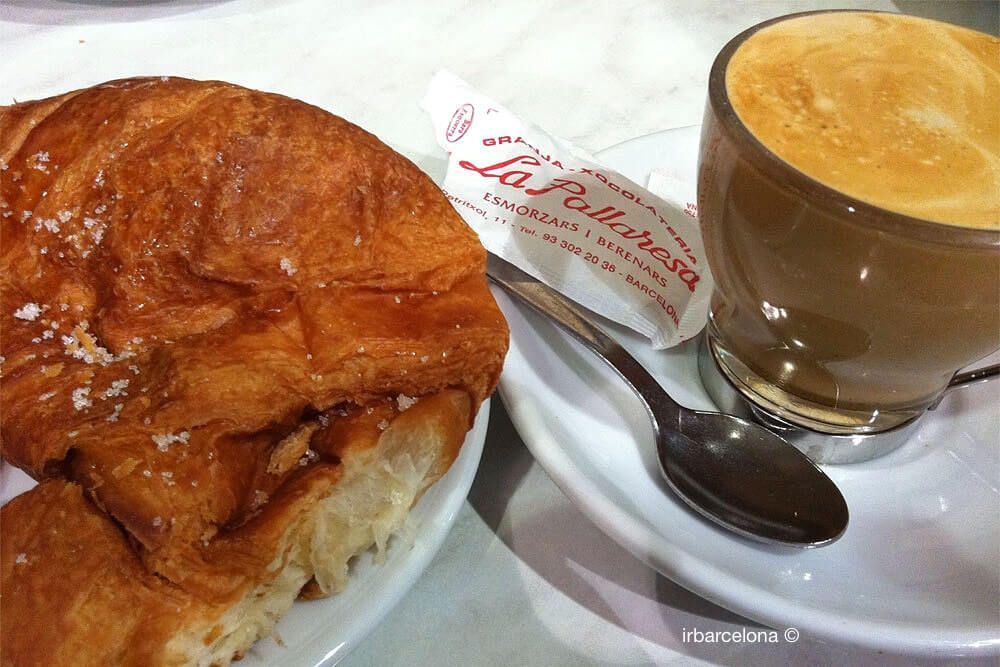
Updated May 25 2023
In the heart of Barcelona, just a short walk from La Rambla, is one of the most historical narrow streets in the city, Carrer Petritxol (Petritxol street). For various reasons Barcelona’s locals consider it to be one of the most charming streets for them.
Highlights about the carrer Petritxol (street)
With a width of just 3 metres and a length of 129 metres, stretching from the Plaça del Pi to carrer Portaferrissa, it’s full of various shops, many with a rich history behind them.
Of particular interest are the famous ‘granjas’ – the cafés that over the past few decades have served the best hot chocolate in Barcelona. As well as these chocolate cafés, there are also other shops and places of interest, which give the street a great buzz, including jewellery shops, stationery shops and even art galleries, which, just like the ‘granjas’, are firmly part of the Carrer Petritxol’s history.
The history of the Petritxol street
In spite of the fact that there are many theories about the origin of the street’s name, which is over 500 years old, it still remains an enigma. This makes the street all the more fascinating, and ensures even more interest in it from locals and visitors alike.
One of the most accepted theories is that Petritxol was the owner of a house that was then in the middle of the street, preventing access through to carrer Portaferrissa. In the middle of the 15th century the house was divided into two parts, in order to allow a thoroughfare through the street.
Another widespread idea is that the name comes from the word ‘pedritxol’, which in turn is derived from the Catalan word ‘pedra’ (piedra in Spanish), which means ‘stone’. It’s thought that this warned carriages of the narrowness of the street and of the presence of stones from the start, meaning that drivers would take extra care.

If you decide to discover what the Carrer Petritxol has to offer, it really doesn’t matter which way you do it, except that if you approach it from Portaferrissa, you’ll be sure to see the Bell Tower of the church of Santa Maria del Pi, which is without doubt a great image for a photo opportunity.
We recommend that you allow plenty of time, and wander down the street at your leisure, as there are so many details that you might miss if you’re in a rush. An example of this is the ceramic plaques, known as ‘mayólicas’, which are displayed on the façades of the buildings and decorate both sides of the street.
The majority of these plaques are like emblems, and they make reference to various events that have happened in the street, to everyday situations and to popular sayings from the past. There are also plaques honouring well-known people from the city that lived on this street, such as Joan Salvat-Papasseit, Montserrat Caballé, Ramon Bech i Taberner and Àngel Guimerà, of whom there is a statue in the neighbouring Plaça de Sant Josep Oriol.
One of the interesting facts about the Carrer Petritxol is that in 1959 it became the first street in the city to become completely pedestrianized.
The ‘Granges’
We think that, contrary to most places in Barcelona, you’ll actually get the most out of the Carrer Petritxol in the winter, because there’s nothing more comforting than going inside one of the wonderful ‘Granges’ (they are the former dairies that specialised in the sale of dairy products) to warm up.
This is will be especially rewarding if you try an authentic hot chocolate, accompanied by ‘Churros’ (long, thin doughnuts that are traditionally dipped in chocolate), ‘Melindros’ (light vanilla-flavoured sponge fingers), a ‘Suizo’ (a sweet pastry) or one of the many other specialities. Can you think of a better way to get out of the cold?!

There are many patisseries and chocolate shops along the street, but the two historical ones that we recommend are the ‘Granja La Pallaresa’ and the ‘Granja Dulcinea’, the latter of which is was frequented by two great names in Catalan’s cultural history, Angel Guimerà and Salvador Dalí. In Barcelona everyone has his or her favourite Granja, but you choose whichever you prefer.
Granja Dulcinea
Address: c/ Petritxol 2.
Opening hours: Every day from 09:00 to 13:00, and 17:00 to 21:00.
Closed: entire month of July, December 25 and January 1.
instagram.com
Granja Dulcinea
Address: c/ Petritxol 11.
Opening hours: Monday to Saturday, from 09:00 to 14:00 and from 16:00 to 21:00. Sundays, from 09:00 to 14:00 and from 17:00 to 21:00.
Closed: three weeks of August, December 25 and January 1.
granjadulcinea.com
From mid-afternoon onwards, and especially in the autumn and winter months, queues often form outside both of these chocolate shops, but we do advise you to wait, as the capacity of the cafés is bigger than it might appear, and the queue tends to move very quickly. Believe us, it’s well worth the wait, both because of the quality of the products and also because of the price – you’ll find that the prices are very reasonable, something that can be hard to find in the centre of Barcelona.
Photo gallery
Map, showing places of interest on the Carrer Petritxol
| Granges / Chocolate cafés | Art Galleries | Stationers | Jewellery Shops |
|---|---|---|---|
| Granja La PallaresaCarrer Petritxol, 11 | Galeria TramaCarrer Petritxol, 5 | Art EscudellersCarrer Petritxol, 8 | Joyería PetritxolCarrer Petritxol, 16 |
| Granja DulcineaCarrer Petritxol, 2 | Sala ParésCarrer Petritxol, 5 | Papelería ConesaCarrer Petritxol, 10 | By Ktu BcnCarrer Petritxol, 1 |
| XocoaCarrer Petritxol, 11 | Galería MaxóCarrer Petritxol, 18 | Torrons VicensCarrer Petritxol, 15 | |
| Le Comptoir de MathildeCarrer Petritxol, 17/td> |












